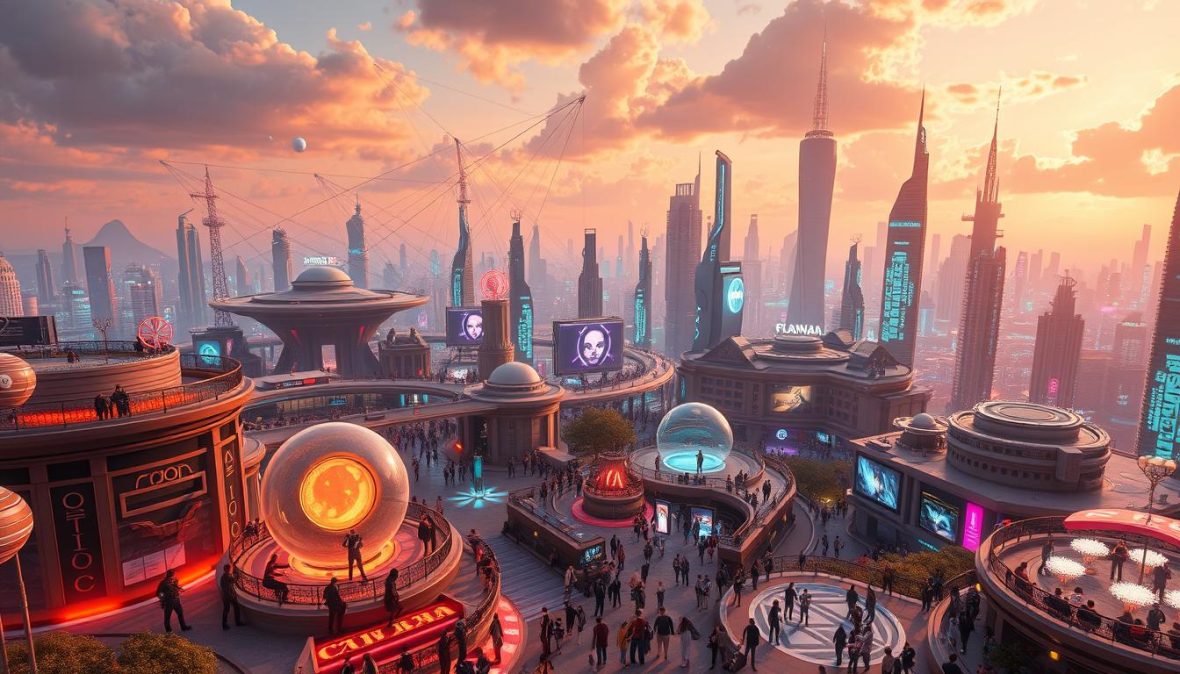Explore Top Meta Metaverse Projects Today!

Virtual Reality (VR) and Augmented Reality (AR) are key technologies driving growth of the Metaverse, creating immersive digital spaces where users can engage in exciting virtual experiences. These technologies are transforming how we game, shop, and interact online, blending the physical and digital worlds. Let’s explore some of the top meta metaverse projects shaping this emerging virtual landscape.
Understanding the Metaverse
The metaverse refers to a collective virtual shared space, merging physical and digital realities. Users explore it via avatars, engaging in activities like socializing, commerce, and gaming. While early versions like Second Life demonstrated the potential of immersive virtual worlds, major investments from companies like Meta (formerly Facebook) are now rapidly advancing metaverse development.
Key points about the metaverse:
- Expected to reach $507.8 billion market value by 2030, growing 38% annually
- Projected to attract over 2.6 billion users
- Metaverse commerce could generate $5 trillion by 2030
- Companies like Microsoft, Nvidia, Unity, Roblox developing metaverse technologies
- Industrial applications include digital twins, training, and augmented workflows
How Virtual Reality is Shaping the Metaverse
Virtual reality is crucial for creating immersive metaverse experiences:
- VR technology has evolved from bulky gear to slim, high-resolution headsets
- Enables virtual meetings, events, and collaboration in digital spaces
- Key players include Meta Quest, Oculus Rift, and HTC Vive
- Gaming industry driving advances in VR experiences
The Role of Augmented Reality in the Metaverse
Augmented reality blends digital information with the physical world:
- Allows real-time interaction with digital elements in physical spaces
- Transforming fields like architecture, tourism, retail, and medical training
- Microsoft HoloLens enables digital overlays for enhanced data visualization
- Markerless AR improves navigation and daily activities
Blockchain Integration and its Impact on the Metaverse
Blockchain technology provides key benefits for metaverse development:
- Ensures ownership and authenticity of digital assets
- Enables secure, transparent transactions in virtual spaces
- Facilitates creation of decentralized virtual worlds
- Allows true ownership of virtual land, identities, and other digital items
- Provides enhanced security and control over digital identities
Exploring Meta Metaverse Projects
Several platforms are leading metaverse development:
Decentraland
- Blockchain-based virtual real estate platform
- Users can buy, sell, and develop virtual land using MANA cryptocurrency
- Enables creation of virtual businesses, social spaces, and more
The Sandbox
- Combines gaming with user-generated content creation
- Uses SAND tokens for in-game transactions
- Allows users to monetize their virtual creations
Somnium Space
- Focused on immersive virtual reality experiences
- Enables social interactions in large-scale virtual environments
- Uses blockchain for seamless transitions between physical and virtual worlds
Digital Asset Creation and NFTs in Metaverse Projects
Non-fungible tokens (NFTs) play a crucial role in metaverse economies:
- Enable ownership and trading of unique digital assets
- Major platforms integrating NFT support
- User-generated content allows creators to monetize their work
- High-value NFT sales demonstrate market potential
Top Meta Metaverse Projects to Watch
Axie Infinity
- Leading play-to-earn blockchain game
- Players earn AXS and SLP tokens through gameplay
Gala Games
- Focuses on social interactions in blockchain gaming
- Uses GALA currency for in-game transactions
Enjin Coin
- Enables creation of valuable in-game items
- Supports development of virtual economies
Immersive Technology: Bridging Physical and Digital Realities
Emerging technologies are blending physical and digital experiences:
- AR enhances real-world shopping with virtual product previews
- VR training improves information retention
- Platforms like Glue and Meta Workrooms enable virtual collaboration
- Ongoing research and investment driving immersive tech innovation
As metaverse technologies continue to evolve, they promise to transform how we work, play, and interact in increasingly immersive digital environments.
